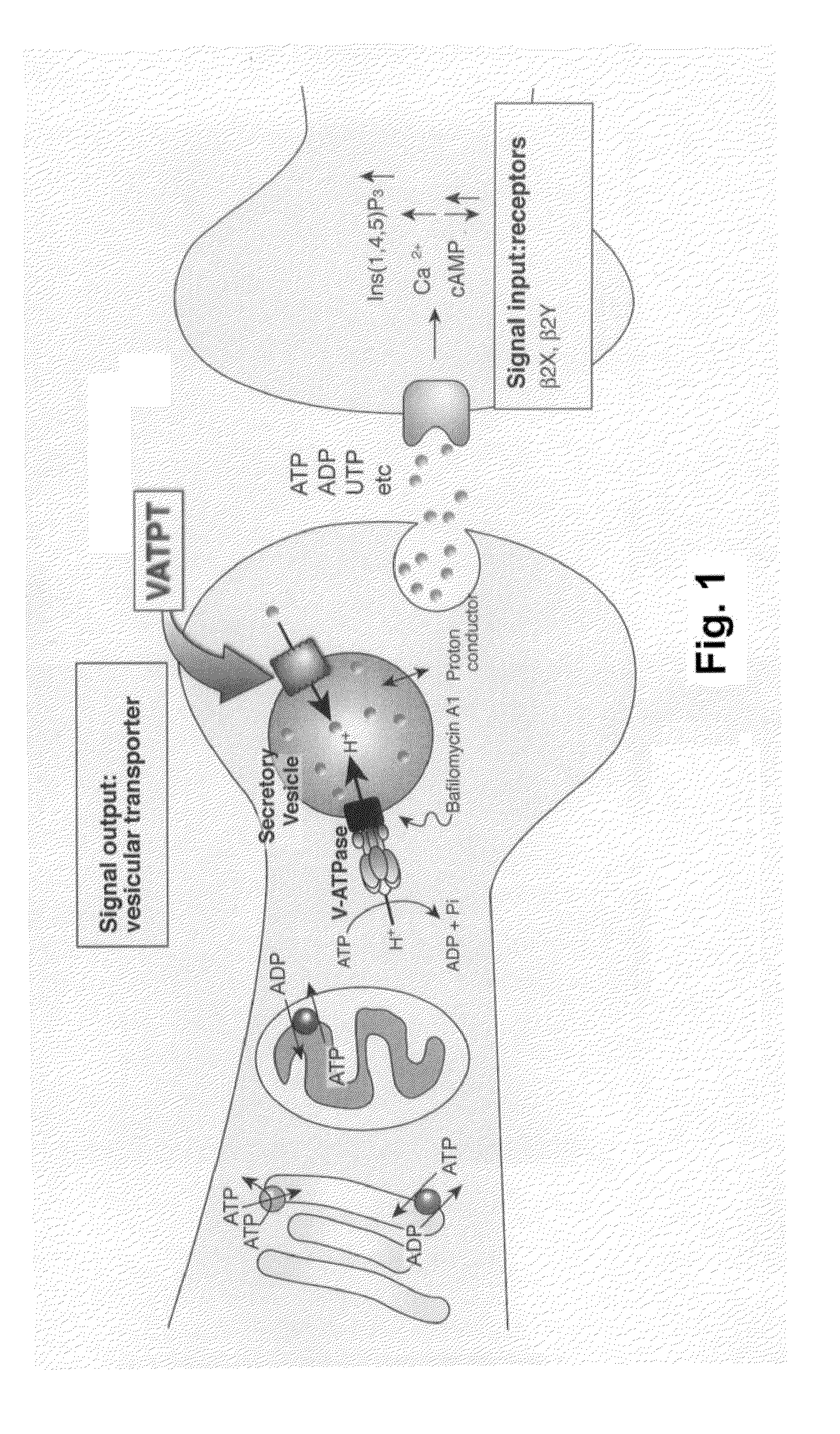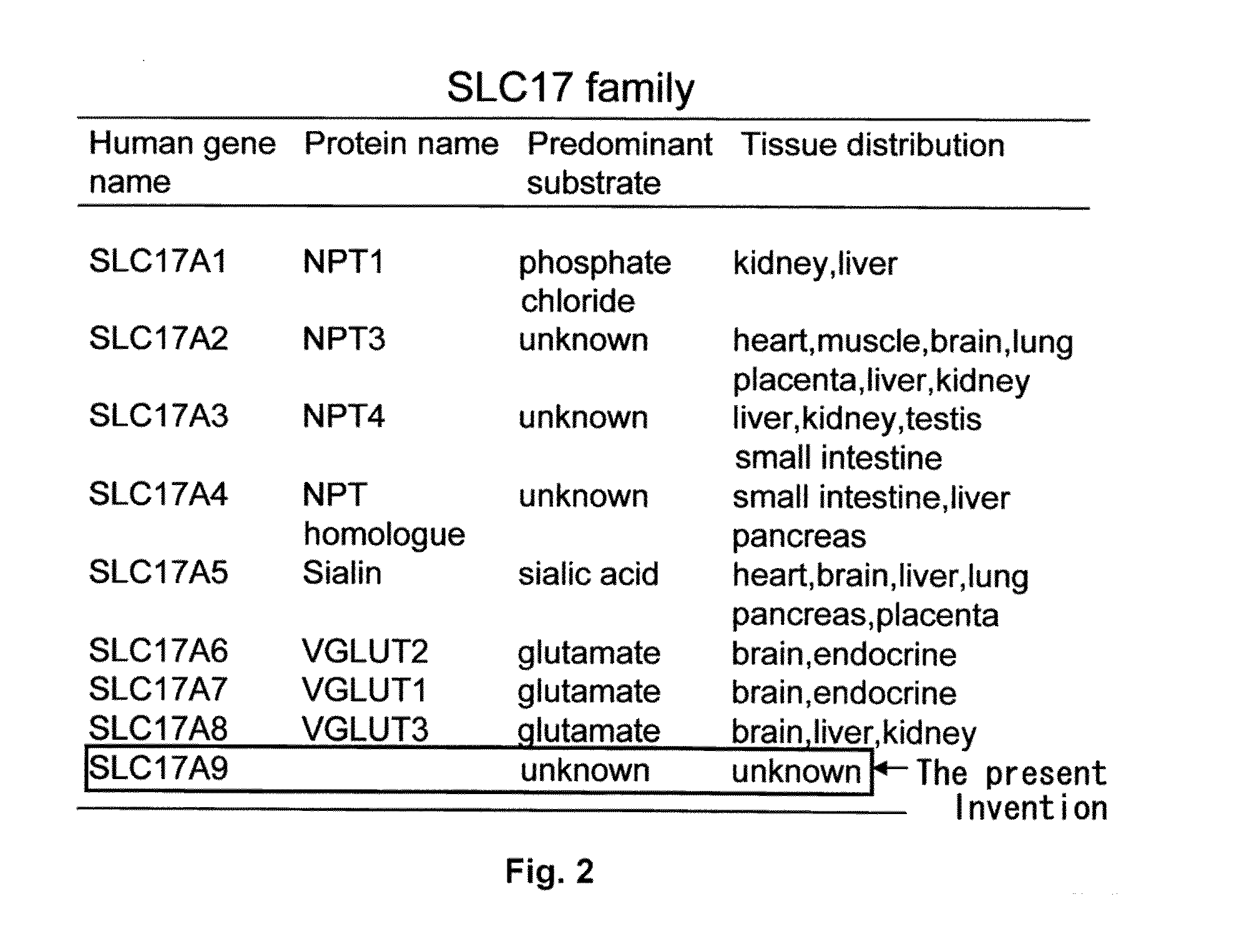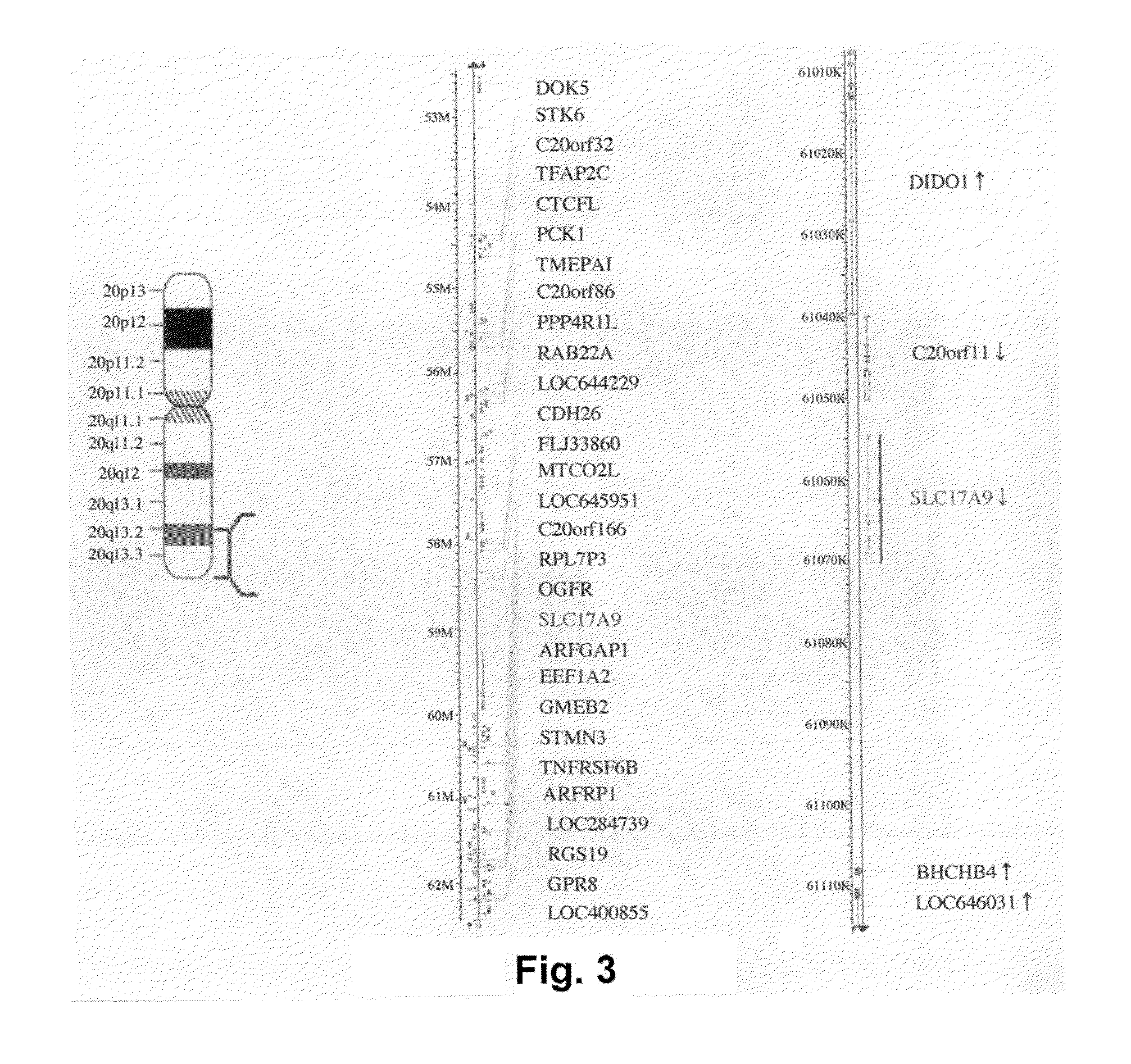Methods for screening modulators of SLC17-type anion transport activity
a technology of anion transporter and modulator, which is applied in the field of anion transporter, can solve the problems of not being able to directly detect the anion transporter, and many mechanisms remain unclear, and achieve the effect of suppressing the functions of polypeptides and/or nucleic acids
- Summary
- Abstract
- Description
- Claims
- Application Information
AI Technical Summary
Benefits of technology
Problems solved by technology
Method used
Image
Examples
example 1
Isolation of SLC17A9 Gene by PCR
(PCR)
[0160]A 0.2 mM dNTP mixed liquid, 1 pmol of primers, and 1.5U of Ex Taq (Takara) were added into Ex TaqBuffer (Takara) to a volume of 500, and PCR was performed using the resultant. The primers used were a forward primer (SEQ ID NO: 3; 5′-CACCATGACCCTGACAAGCAGGCGCCAGGA-3′) and a reverse primer (SEQ ID NO: 4; 5′-CTAGAGGTCCTCATGGGTAGAGCTC-3′). The PCR conditions included heating for 3 minutes at 94° C., subsequent 30 repetitions of a cycle of 3 minutes at 94° C., 30 seconds at 56° C., and 2 minutes at 72° C., and then heating for 5 minutes at 72° C.
(Linking to Entry Vector)
[0161]A PCR fragment was incorporated into an entry vector (pENTR, Invitrogen) using a TOPO cloning kit (Invitrogen). The reaction solution (6 μ) was a solution containing 1 μl of a salt solution (Invitrogen), 10 fmol of the vector (Invitrogen), and 20 fmol of the PCR product. The reaction was carried out at room temperature for 10 minutes, to thereby incorporate SLC17A9 into the...
example 2
Expression and Purification of SLC17A9 Membrane Protein
(Recombination into pDEST10)
[0164]The cDNA of SLC17A9 was cloned into a pDEST10 vector from the pENTR / SLC17A9 produced in Example 1, using LR clonase. To 150 ng of the pENTR / SLC17A9 plasmid were added 300 ng of a pDEST10 plasmid and 4 μl of LR clonase, and the mixture was incubated for one hour at 25° C. Subsequently, 2 μl of proteinase K was added thereto, and the mixture was incubated for 30 minutes at 37° C. The reaction liquid was used to transform DH5α competent cells of E. coli. The resultant plasmid was recovered from the transformed DH5α cells using a QIAprep Spin Miniprep Kit (Qiagen), and was designated as pDEST10 / SLC17A9.
(Production of Recombinant bacmid)
[0165]The cDNA of SLC17A9 was incorporated into the baculovirus genome (bacmid) using the pDEST10 / SLC17A9, using the Baculovirus Expression System with Gateway Technology (Invitrogen).
[0166]Specifically, 20 ng of pDEST10 / SLC17A9 was added to 25 μl of DH10Bac competent...
example 3
Purification of FoF1-ATPase
[0172]FoF1 protein, which is a proton pump, was prepared according to the procedure described in Moriyama Y, et al., J. Biol. Chem. 266, 22141-22146 (1991).
[0173]E. coli DK8 containing pBWU13, which is a high expression plasmid of FoF1, was cultured in Tanaka medium (34 mM monopotassium phosphate, 64 mM dipotassium phosphate, 20 mM ammonium sulfate, 0.3 mM magnesium chloride, 1 μM iron sulfate, 1 μM calcium chloride, 1 μM zinc chloride, 100 μg / ml isoleucin, 100 μg / ml valine, and 2 μg / ml thiamine) supplemented with 0.5% glycerol, and then the bacterial cells were recovered. The subsequent preparation processes were all carried out at 4° C.
[0174]About 10 g of the bacterial cells (DK8 / pBWU13) was suspended in 40 ml of a membrane preparation buffer solution (50 mM Tris-HCl (pH 8.0), 2 mM magnesium chloride, 0.5 mM EDTA, 1 mM PMSF, 1 μg / ml leupeptin, 1 μg / ml pepstatin A, 10% (v / v) glycerol, and 1 mM DTT at 4° C.), and the cells were disrupted with a French pres...
PUM
| Property | Measurement | Unit |
|---|---|---|
| pH | aaaaa | aaaaa |
| melting temperature | aaaaa | aaaaa |
| melting temperature | aaaaa | aaaaa |
Abstract
Description
Claims
Application Information
 Login to View More
Login to View More - R&D
- Intellectual Property
- Life Sciences
- Materials
- Tech Scout
- Unparalleled Data Quality
- Higher Quality Content
- 60% Fewer Hallucinations
Browse by: Latest US Patents, China's latest patents, Technical Efficacy Thesaurus, Application Domain, Technology Topic, Popular Technical Reports.
© 2025 PatSnap. All rights reserved.Legal|Privacy policy|Modern Slavery Act Transparency Statement|Sitemap|About US| Contact US: help@patsnap.com



